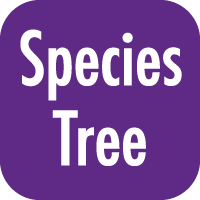# Welcome to the Narrative
from IPython.display import IFrame
IFrame("https://www.kbase.us/narrative-welcome-cell/", width="100%", height="300px")
from biokbase.narrative.jobs.appmanager import AppManager
AppManager().run_app_batch(
[{
"app_id": "kb_uploadmethods/import_fastq_noninterleaved_as_reads_from_staging",
"tag": "release",
"version": "5b9346463df88a422ff5d4f4cba421679f63c73f",
"params": [{
"fastq_fwd_staging_file_name": "Microcystis_S210_R1_001.fastq",
"fastq_rev_staging_file_name": "Microcystis_S210_R2_001.fastq",
"name": "1-Microcystis-Fastq-Import"
}, {
"fastq_fwd_staging_file_name": "Dolichospermum_S211_R1_001.fastq",
"fastq_rev_staging_file_name": "Dolichospermum_S211_R2_001.fastq",
"name": "1-Anabaena-Fastq-Import"
}],
"shared_params": {
"sequencing_tech": "Illumina",
"single_genome": 1,
"read_orientation_outward": 0,
"insert_size_std_dev": None,
"insert_size_mean": None
}
}],
cell_id="43d8f995-2969-49a1-9d51-8c07f2c1a65c",
run_id="896c91af-1544-41ce-ad84-4d5285f541a1"
)


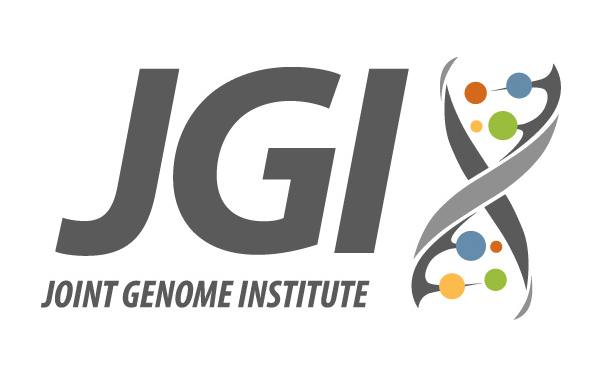
| Created Object Name | Type | Description |
|---|---|---|
| 2-Microcystis-RQCFilter | PairedEndLibrary | Filtered reads library |

| Created Object Name | Type | Description |
|---|---|---|
| 2-Anabaena-RQCFilter | PairedEndLibrary | Filtered reads library |



| Created Object Name | Type | Description |
|---|---|---|
| 3-Microcystis-Trimmomatic_paired | PairedEndLibrary | Trimmed Reads |
| 3-Microcystis-Trimmomatic_unpaired_fwd | SingleEndLibrary | Trimmed Unpaired Forward Reads |
| 3-Microcystis-Trimmomatic_unpaired_rev | SingleEndLibrary | Trimmed Unpaired Reverse Reads |

| Created Object Name | Type | Description |
|---|---|---|
| 3-Anabaena-Trimmomatic_paired | PairedEndLibrary | Trimmed Reads |
| 3-Anabaena-Trimmomatic_unpaired_fwd | SingleEndLibrary | Trimmed Unpaired Forward Reads |
| 3-Anabaena-Trimmomatic_unpaired_rev | SingleEndLibrary | Trimmed Unpaired Reverse Reads |

| 3-Anabaena-Trimmomatic_paired |
| ALL |

| 3-Microcystis-Trimmomatic_paired |
| ALL |

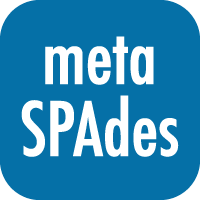
| Created Object Name | Type | Description |
|---|---|---|
| 4-Microcystis-metaSPAdes.Assembly | Assembly | Assembled contigs |

| Created Object Name | Type | Description |
|---|---|---|
| 4-Anabaena-metaSPAdes.Assembly | Assembly | Assembled contigs |

| 3-Anabaena-Trimmomatic_paired |
| Created Object Name | Type | Description |
|---|---|---|
| 5-Anabaena-MaxBin2Contigs | BinnedContigs | BinnedContigs from MaxBin2 |

| 3-Microcystis-Trimmomatic_paired |
| Created Object Name | Type | Description |
|---|---|---|
| 5-Microcystis-MaxBin2Contigs | BinnedContigs | BinnedContigs from MaxBin2 |
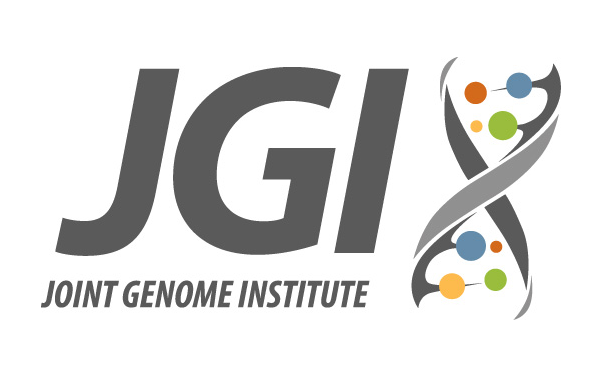
| 3-Anabaena-Trimmomatic_paired |

| 3-Microcystis-Trimmomatic_paired |

| 3-Anabaena-Trimmomatic_paired |

| 3-Microcystis-Trimmomatic_paired |

| 5-Anabaena-MaxBin2Contigs |
| 5-Anabaena-MetaBat2Contigs |
| 5-Anabaena-CONCOCTContigs |

| 5-Microcystis-MetaBat2Contigs |
| 5-Microcystis-MaxBin2Contigs |
| 5-Microcystis-CONCOCTContigs |
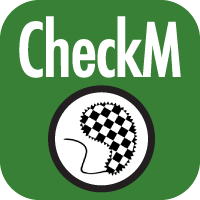

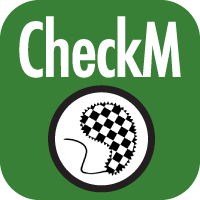
| Created Object Name | Type | Description |
|---|---|---|
| 6-AnabaenaCheckM_HQ_bins.BinnedContigs | BinnedContigs | HQ BinnedContigs 6-AnabaenaCheckM_HQ_bins.BinnedContigs |

| Created Object Name | Type | Description |
|---|---|---|
| 6-MicrocystisCheckM_HQ_bins.BinnedContigs | BinnedContigs | HQ BinnedContigs 6-MicrocystisCheckM_HQ_bins.BinnedContigs |

| Created Object Name | Type | Description |
|---|---|---|
| Microcystis_extracted_bins.AssemblySet | AssemblySet | Assembly set of extracted assemblies |
| bin.003.fastaMicrocystis_assembly | Assembly | Assembly object of extracted contigs |
| bin.005.fastaMicrocystis_assembly | Assembly | Assembly object of extracted contigs |
| bin.001.fastaMicrocystis_assembly | Assembly | Assembly object of extracted contigs |
| bin.002.fastaMicrocystis_assembly | Assembly | Assembly object of extracted contigs |
| bin.006.fastaMicrocystis_assembly | Assembly | Assembly object of extracted contigs |
| bin.008.fastaMicrocystis_assembly | Assembly | Assembly object of extracted contigs |
| bin.004.fastaMicrocystis_assembly | Assembly | Assembly object of extracted contigs |
| bin.007.fastaMicrocystis_assembly | Assembly | Assembly object of extracted contigs |

| Created Object Name | Type | Description |
|---|---|---|
| Anabaena_extracted_bins.AssemblySet | AssemblySet | Assembly set of extracted assemblies |
| bin.004.fastaAnabaena_assembly | Assembly | Assembly object of extracted contigs |
| bin.003.fastaAnabaena_assembly | Assembly | Assembly object of extracted contigs |
| bin.007.fastaAnabaena_assembly | Assembly | Assembly object of extracted contigs |
| bin.011.fastaAnabaena_assembly | Assembly | Assembly object of extracted contigs |
| bin.008.fastaAnabaena_assembly | Assembly | Assembly object of extracted contigs |
| bin.009.fastaAnabaena_assembly | Assembly | Assembly object of extracted contigs |
| bin.002.fastaAnabaena_assembly | Assembly | Assembly object of extracted contigs |
| bin.006.fastaAnabaena_assembly | Assembly | Assembly object of extracted contigs |
| bin.005.fastaAnabaena_assembly | Assembly | Assembly object of extracted contigs |
| bin.010.fastaAnabaena_assembly | Assembly | Assembly object of extracted contigs |
| bin.001.fastaAnabaena_assembly | Assembly | Assembly object of extracted contigs |

| Anabaena_extracted_bins.AssemblySet |
| Created Object Name | Type | Description |
|---|---|---|
| bin.005.fastaAnabaena_assembly.RAST | Genome | RAST annotation |
| bin.011.fastaAnabaena_assembly.RAST | Genome | RAST annotation |
| bin.001.fastaAnabaena_assembly.RAST | Genome | RAST annotation |
| bin.008.fastaAnabaena_assembly.RAST | Genome | RAST annotation |
| bin.010.fastaAnabaena_assembly.RAST | Genome | RAST annotation |
| bin.003.fastaAnabaena_assembly.RAST | Genome | RAST annotation |
| bin.006.fastaAnabaena_assembly.RAST | Genome | RAST annotation |
| bin.002.fastaAnabaena_assembly.RAST | Genome | RAST annotation |
| bin.007.fastaAnabaena_assembly.RAST | Genome | RAST annotation |
| bin.009.fastaAnabaena_assembly.RAST | Genome | RAST annotation |
| bin.004.fastaAnabaena_assembly.RAST | Genome | RAST annotation |
| 7.AnabaenaCommAnnotation | GenomeSet | Genome Set |
The RAST algorithm was applied to annotating a genome sequence comprised of 91 contigs containing 3313966 nucleotides. No initial gene calls were provided. Standard features were called using: glimmer3; prodigal. A scan was conducted for the following additional feature types: rRNA; tRNA; selenoproteins; pyrrolysoproteins; repeat regions; crispr. The genome features were functionally annotated using the following algorithm(s): Kmers V2; Kmers V1; protein similarity. In addition to the remaining original 0 coding features and 0 non-coding features, 3169 new features were called, of which 113 are non-coding. Output genome has the following feature types: Coding gene 3056 Non-coding repeat 82 Non-coding rna 31 Overall, the genes have 0 distinct functions. The genes include 0 genes with a SEED annotation ontology across 0 distinct SEED functions. The number of distinct functions can exceed the number of genes because some genes have multiple functions. bin.005.fastaAnabaena_assembly succeeded! The RAST algorithm was applied to annotating a genome sequence comprised of 50 contigs containing 4751264 nucleotides. No initial gene calls were provided. Standard features were called using: glimmer3; prodigal. A scan was conducted for the following additional feature types: rRNA; tRNA; selenoproteins; pyrrolysoproteins; repeat regions; crispr. The genome features were functionally annotated using the following algorithm(s): Kmers V2; Kmers V1; protein similarity. In addition to the remaining original 0 coding features and 0 non-coding features, 4449 new features were called, of which 249 are non-coding. Output genome has the following feature types: Coding gene 4200 Non-coding crispr_array 2 Non-coding crispr_repeat 91 Non-coding crispr_spacer 89 Non-coding repeat 20 Non-coding rna 47 Overall, the genes have 0 distinct functions. The genes include 0 genes with a SEED annotation ontology across 0 distinct SEED functions. The number of distinct functions can exceed the number of genes because some genes have multiple functions. bin.011.fastaAnabaena_assembly succeeded! The RAST algorithm was applied to annotating a genome sequence comprised of 23 contigs containing 4068854 nucleotides. No initial gene calls were provided. Standard features were called using: glimmer3; prodigal. A scan was conducted for the following additional feature types: rRNA; tRNA; selenoproteins; pyrrolysoproteins; repeat regions; crispr. The genome features were functionally annotated using the following algorithm(s): Kmers V2; Kmers V1; protein similarity. In addition to the remaining original 0 coding features and 0 non-coding features, 3918 new features were called, of which 51 are non-coding. Output genome has the following feature types: Coding gene 3867 Non-coding repeat 8 Non-coding rna 43 Overall, the genes have 0 distinct functions. The genes include 0 genes with a SEED annotation ontology across 0 distinct SEED functions. The number of distinct functions can exceed the number of genes because some genes have multiple functions. bin.001.fastaAnabaena_assembly succeeded! The RAST algorithm was applied to annotating a genome sequence comprised of 1358 contigs containing 4828739 nucleotides. No initial gene calls were provided. Standard features were called using: glimmer3; prodigal. A scan was conducted for the following additional feature types: rRNA; tRNA; selenoproteins; pyrrolysoproteins; repeat regions; crispr. The genome features were functionally annotated using the following algorithm(s): Kmers V2; Kmers V1; protein similarity. In addition to the remaining original 0 coding features and 0 non-coding features, 6029 new features were called, of which 31 are non-coding. Output genome has the following feature types: Coding gene 5998 Non-coding repeat 2 Non-coding rna 29 Overall, the genes have 0 distinct functions. The genes include 0 genes with a SEED annotation ontology across 0 distinct SEED functions. The number of distinct functions can exceed the number of genes because some genes have multiple functions. bin.008.fastaAnabaena_assembly succeeded! The RAST algorithm was applied to annotating a genome sequence comprised of 56 contigs containing 2697984 nucleotides. No initial gene calls were provided. Standard features were called using: glimmer3; prodigal. A scan was conducted for the following additional feature types: rRNA; tRNA; selenoproteins; pyrrolysoproteins; repeat regions; crispr. The genome features were functionally annotated using the following algorithm(s): Kmers V2; Kmers V1; protein similarity. In addition to the remaining original 0 coding features and 0 non-coding features, 2519 new features were called, of which 47 are non-coding. Output genome has the following feature types: Coding gene 2472 Non-coding repeat 4 Non-coding rna 43 Overall, the genes have 0 distinct functions. The genes include 0 genes with a SEED annotation ontology across 0 distinct SEED functions. The number of distinct functions can exceed the number of genes because some genes have multiple functions. bin.010.fastaAnabaena_assembly succeeded! The RAST algorithm was applied to annotating a genome sequence comprised of 697 contigs containing 3844699 nucleotides. No initial gene calls were provided. Standard features were called using: glimmer3; prodigal. A scan was conducted for the following additional feature types: rRNA; tRNA; selenoproteins; pyrrolysoproteins; repeat regions; crispr. The genome features were functionally annotated using the following algorithm(s): Kmers V2; Kmers V1; protein similarity. In addition to the remaining original 0 coding features and 0 non-coding features, 4480 new features were called, of which 40 are non-coding. Output genome has the following feature types: Coding gene 4440 Non-coding repeat 9 Non-coding rna 31 Overall, the genes have 0 distinct functions. The genes include 0 genes with a SEED annotation ontology across 0 distinct SEED functions. The number of distinct functions can exceed the number of genes because some genes have multiple functions. bin.003.fastaAnabaena_assembly succeeded! The RAST algorithm was applied to annotating a genome sequence comprised of 49 contigs containing 6263306 nucleotides. No initial gene calls were provided. Standard features were called using: glimmer3; prodigal. A scan was conducted for the following additional feature types: rRNA; tRNA; selenoproteins; pyrrolysoproteins; repeat regions; crispr. The genome features were functionally annotated using the following algorithm(s): Kmers V2; Kmers V1; protein similarity. In addition to the remaining original 0 coding features and 0 non-coding features, 6146 new features were called, of which 526 are non-coding. Output genome has the following feature types: Coding gene 5620 Non-coding crispr_array 7 Non-coding crispr_repeat 148 Non-coding crispr_spacer 141 Non-coding repeat 190 Non-coding rna 40 Overall, the genes have 0 distinct functions. The genes include 0 genes with a SEED annotation ontology across 0 distinct SEED functions. The number of distinct functions can exceed the number of genes because some genes have multiple functions. bin.006.fastaAnabaena_assembly succeeded! The RAST algorithm was applied to annotating a genome sequence comprised of 611 contigs containing 4053288 nucleotides. No initial gene calls were provided. Standard features were called using: glimmer3; prodigal. A scan was conducted for the following additional feature types: rRNA; tRNA; selenoproteins; pyrrolysoproteins; repeat regions; crispr. The genome features were functionally annotated using the following algorithm(s): Kmers V2; Kmers V1; protein similarity. In addition to the remaining original 0 coding features and 0 non-coding features, 4520 new features were called, of which 49 are non-coding. Output genome has the following feature types: Coding gene 4471 Non-coding repeat 15 Non-coding rna 34 Overall, the genes have 0 distinct functions. The genes include 0 genes with a SEED annotation ontology across 0 distinct SEED functions. The number of distinct functions can exceed the number of genes because some genes have multiple functions. bin.002.fastaAnabaena_assembly succeeded! The RAST algorithm was applied to annotating a genome sequence comprised of 353 contigs containing 5531808 nucleotides. No initial gene calls were provided. Standard features were called using: glimmer3; prodigal. A scan was conducted for the following additional feature types: rRNA; tRNA; selenoproteins; pyrrolysoproteins; repeat regions; crispr. The genome features were functionally annotated using the following algorithm(s): Kmers V2; Kmers V1; protein similarity. In addition to the remaining original 0 coding features and 0 non-coding features, 5551 new features were called, of which 88 are non-coding. Output genome has the following feature types: Coding gene 5463 Non-coding repeat 48 Non-coding rna 40 Overall, the genes have 0 distinct functions. The genes include 0 genes with a SEED annotation ontology across 0 distinct SEED functions. The number of distinct functions can exceed the number of genes because some genes have multiple functions. bin.007.fastaAnabaena_assembly succeeded! The RAST algorithm was applied to annotating a genome sequence comprised of 4 contigs containing 4029898 nucleotides. No initial gene calls were provided. Standard features were called using: glimmer3; prodigal. A scan was conducted for the following additional feature types: rRNA; tRNA; selenoproteins; pyrrolysoproteins; repeat regions; crispr. The genome features were functionally annotated using the following algorithm(s): Kmers V2; Kmers V1; protein similarity. In addition to the remaining original 0 coding features and 0 non-coding features, 3864 new features were called, of which 42 are non-coding. Output genome has the following feature types: Coding gene 3822 Non-coding repeat 2 Non-coding rna 40 Overall, the genes have 0 distinct functions. The genes include 0 genes with a SEED annotation ontology across 0 distinct SEED functions. The number of distinct functions can exceed the number of genes because some genes have multiple functions. bin.009.fastaAnabaena_assembly succeeded! The RAST algorithm was applied to annotating a genome sequence comprised of 84 contigs containing 4182746 nucleotides. No initial gene calls were provided. Standard features were called using: glimmer3; prodigal. A scan was conducted for the following additional feature types: rRNA; tRNA; selenoproteins; pyrrolysoproteins; repeat regions; crispr. The genome features were functionally annotated using the following algorithm(s): Kmers V2; Kmers V1; protein similarity. In addition to the remaining original 0 coding features and 0 non-coding features, 4212 new features were called, of which 64 are non-coding. Output genome has the following feature types: Coding gene 4148 Non-coding repeat 20 Non-coding rna 44 Overall, the genes have 0 distinct functions. The genes include 0 genes with a SEED annotation ontology across 0 distinct SEED functions. The number of distinct functions can exceed the number of genes because some genes have multiple functions. bin.004.fastaAnabaena_assembly succeeded!

| Microcystis_extracted_bins.AssemblySet |
| Created Object Name | Type | Description |
|---|---|---|
| bin.002.fastaMicrocystis_assembly.RAST | Genome | RAST annotation |
| bin.006.fastaMicrocystis_assembly.RAST | Genome | RAST annotation |
| bin.005.fastaMicrocystis_assembly.RAST | Genome | RAST annotation |
| bin.001.fastaMicrocystis_assembly.RAST | Genome | RAST annotation |
| bin.007.fastaMicrocystis_assembly.RAST | Genome | RAST annotation |
| bin.004.fastaMicrocystis_assembly.RAST | Genome | RAST annotation |
| bin.003.fastaMicrocystis_assembly.RAST | Genome | RAST annotation |
| bin.008.fastaMicrocystis_assembly.RAST | Genome | RAST annotation |
| 7.MicrocystisCommAnnotation | GenomeSet | Genome Set |
The RAST algorithm was applied to annotating a genome sequence comprised of 80 contigs containing 4174534 nucleotides. No initial gene calls were provided. Standard features were called using: glimmer3; prodigal. A scan was conducted for the following additional feature types: rRNA; tRNA; selenoproteins; pyrrolysoproteins; repeat regions; crispr. The genome features were functionally annotated using the following algorithm(s): Kmers V2; Kmers V1; protein similarity. In addition to the remaining original 0 coding features and 0 non-coding features, 4185 new features were called, of which 66 are non-coding. Output genome has the following feature types: Coding gene 4119 Non-coding repeat 19 Non-coding rna 47 Overall, the genes have 0 distinct functions. The genes include 0 genes with a SEED annotation ontology across 0 distinct SEED functions. The number of distinct functions can exceed the number of genes because some genes have multiple functions. bin.002.fastaMicrocystis_assembly succeeded! The RAST algorithm was applied to annotating a genome sequence comprised of 462 contigs containing 2168266 nucleotides. No initial gene calls were provided. Standard features were called using: glimmer3; prodigal. A scan was conducted for the following additional feature types: rRNA; tRNA; selenoproteins; pyrrolysoproteins; repeat regions; crispr. The genome features were functionally annotated using the following algorithm(s): Kmers V2; Kmers V1; protein similarity. In addition to the remaining original 0 coding features and 0 non-coding features, 2469 new features were called, of which 28 are non-coding. Output genome has the following feature types: Coding gene 2441 Non-coding repeat 7 Non-coding rna 21 Overall, the genes have 0 distinct functions. The genes include 0 genes with a SEED annotation ontology across 0 distinct SEED functions. The number of distinct functions can exceed the number of genes because some genes have multiple functions. bin.006.fastaMicrocystis_assembly succeeded! The RAST algorithm was applied to annotating a genome sequence comprised of 218 contigs containing 4517780 nucleotides. No initial gene calls were provided. Standard features were called using: glimmer3; prodigal. A scan was conducted for the following additional feature types: rRNA; tRNA; selenoproteins; pyrrolysoproteins; repeat regions; crispr. The genome features were functionally annotated using the following algorithm(s): Kmers V2; Kmers V1; protein similarity. In addition to the remaining original 0 coding features and 0 non-coding features, 5990 new features were called, of which 1048 are non-coding. Output genome has the following feature types: Coding gene 4942 Non-coding crispr_array 5 Non-coding crispr_repeat 182 Non-coding crispr_spacer 177 Non-coding repeat 645 Non-coding rna 39 Overall, the genes have 0 distinct functions. The genes include 0 genes with a SEED annotation ontology across 0 distinct SEED functions. The number of distinct functions can exceed the number of genes because some genes have multiple functions. bin.005.fastaMicrocystis_assembly succeeded! The RAST algorithm was applied to annotating a genome sequence comprised of 47 contigs containing 4860791 nucleotides. No initial gene calls were provided. Standard features were called using: glimmer3; prodigal. A scan was conducted for the following additional feature types: rRNA; tRNA; selenoproteins; pyrrolysoproteins; repeat regions; crispr. The genome features were functionally annotated using the following algorithm(s): Kmers V2; Kmers V1; protein similarity. In addition to the remaining original 0 coding features and 0 non-coding features, 4810 new features were called, of which 70 are non-coding. Output genome has the following feature types: Coding gene 4740 Non-coding repeat 23 Non-coding rna 47 Overall, the genes have 0 distinct functions. The genes include 0 genes with a SEED annotation ontology across 0 distinct SEED functions. The number of distinct functions can exceed the number of genes because some genes have multiple functions. bin.001.fastaMicrocystis_assembly succeeded! The RAST algorithm was applied to annotating a genome sequence comprised of 22 contigs containing 4031587 nucleotides. No initial gene calls were provided. Standard features were called using: glimmer3; prodigal. A scan was conducted for the following additional feature types: rRNA; tRNA; selenoproteins; pyrrolysoproteins; repeat regions; crispr. The genome features were functionally annotated using the following algorithm(s): Kmers V2; Kmers V1; protein similarity. In addition to the remaining original 0 coding features and 0 non-coding features, 3860 new features were called, of which 46 are non-coding. Output genome has the following feature types: Coding gene 3814 Non-coding repeat 6 Non-coding rna 40 Overall, the genes have 0 distinct functions. The genes include 0 genes with a SEED annotation ontology across 0 distinct SEED functions. The number of distinct functions can exceed the number of genes because some genes have multiple functions. bin.007.fastaMicrocystis_assembly succeeded! The RAST algorithm was applied to annotating a genome sequence comprised of 66 contigs containing 3780807 nucleotides. No initial gene calls were provided. Standard features were called using: glimmer3; prodigal. A scan was conducted for the following additional feature types: rRNA; tRNA; selenoproteins; pyrrolysoproteins; repeat regions; crispr. The genome features were functionally annotated using the following algorithm(s): Kmers V2; Kmers V1; protein similarity. In addition to the remaining original 0 coding features and 0 non-coding features, 3829 new features were called, of which 64 are non-coding. Output genome has the following feature types: Coding gene 3765 Non-coding repeat 14 Non-coding rna 50 Overall, the genes have 0 distinct functions. The genes include 0 genes with a SEED annotation ontology across 0 distinct SEED functions. The number of distinct functions can exceed the number of genes because some genes have multiple functions. bin.004.fastaMicrocystis_assembly succeeded! The RAST algorithm was applied to annotating a genome sequence comprised of 31 contigs containing 3189321 nucleotides. No initial gene calls were provided. Standard features were called using: glimmer3; prodigal. A scan was conducted for the following additional feature types: rRNA; tRNA; selenoproteins; pyrrolysoproteins; repeat regions; crispr. The genome features were functionally annotated using the following algorithm(s): Kmers V2; Kmers V1; protein similarity. In addition to the remaining original 0 coding features and 0 non-coding features, 2915 new features were called, of which 49 are non-coding. Output genome has the following feature types: Coding gene 2866 Non-coding repeat 6 Non-coding rna 43 Overall, the genes have 0 distinct functions. The genes include 0 genes with a SEED annotation ontology across 0 distinct SEED functions. The number of distinct functions can exceed the number of genes because some genes have multiple functions. bin.003.fastaMicrocystis_assembly succeeded! The RAST algorithm was applied to annotating a genome sequence comprised of 42 contigs containing 4448024 nucleotides. No initial gene calls were provided. Standard features were called using: glimmer3; prodigal. A scan was conducted for the following additional feature types: rRNA; tRNA; selenoproteins; pyrrolysoproteins; repeat regions; crispr. The genome features were functionally annotated using the following algorithm(s): Kmers V2; Kmers V1; protein similarity. In addition to the remaining original 0 coding features and 0 non-coding features, 4156 new features were called, of which 244 are non-coding. Output genome has the following feature types: Coding gene 3912 Non-coding crispr_array 1 Non-coding crispr_repeat 91 Non-coding crispr_spacer 90 Non-coding repeat 15 Non-coding rna 47 Overall, the genes have 0 distinct functions. The genes include 0 genes with a SEED annotation ontology across 0 distinct SEED functions. The number of distinct functions can exceed the number of genes because some genes have multiple functions. bin.008.fastaMicrocystis_assembly succeeded!
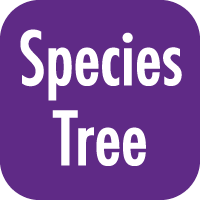
| bin.001.fastaMicrocystis_assembly.RAST |
| bin.002.fastaMicrocystis_assembly.RAST |
| bin.003.fastaMicrocystis_assembly.RAST |
| bin.004.fastaMicrocystis_assembly.RAST |
| bin.005.fastaMicrocystis_assembly.RAST |
| bin.006.fastaMicrocystis_assembly.RAST |
| bin.007.fastaMicrocystis_assembly.RAST |
| bin.008.fastaMicrocystis_assembly.RAST |
| bin.001.fastaAnabaena_assembly.RAST |
| bin.002.fastaAnabaena_assembly.RAST |
| bin.003.fastaMicrocystis_assembly.RAST |
| bin.004.fastaAnabaena_assembly.RAST |
| bin.005.fastaAnabaena_assembly.RAST |
| bin.006.fastaAnabaena_assembly.RAST |
| bin.007.fastaAnabaena_assembly.RAST |
| bin.007.fastaAnabaena_assembly.RAST |
| bin.008.fastaAnabaena_assembly.RAST |
| bin.009.fastaAnabaena_assembly.RAST |
| bin.010.fastaAnabaena_assembly.RAST |
| bin.011.fastaAnabaena_assembly.RAST |
